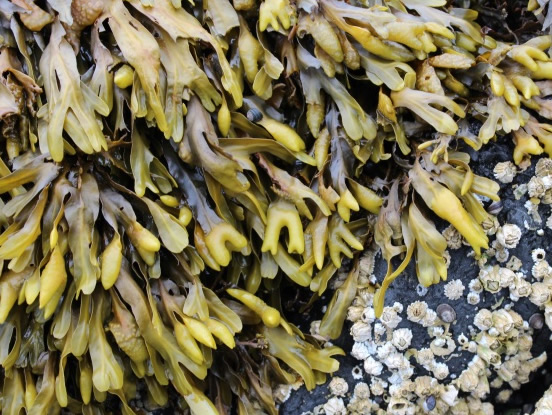Rockweed

Botanical Name: Fucus gardneri
Common Name: Rockweed (seawood)
Other Names: Ellquaq (letting off air)
Found in: Sheltered shores from high water mark to below low water mark
Physical Characteristics: Grows to 18 inches long. Young rockweed is an olive green, mature, it turns a golden brown. A flattened branching body has a prominent midrib running up the center of the branches. Healthy branches are 15 mm wide.
Nutritional Value: Good source of vitamins A and C and contains B-complex vitamins. Rich in minerals, such as iron, magnesium, potassium, calcium and zinc. Also contains essential fatty acids and oils that regulate and promote healthy cardiac and respiratory function
Parts of the plant used: parts of the plant that have not developed bladders.
When plant should be gathered: spring and early summer
Plant applications: food
Reported Benefits: food
Preparation/Processing: Food: People use rockweed for food in a variety of ways. They fry the flat young blades in oil in the spring. It can be dipped in cool to lukewarm water and used right away or stored in the refrigerator. It should be dried in direct sunlight to achieve the highest quality taste. In the spring and throughout the year, people roast the stems over an open fire till they turn green and soft, then dip them in oil if it is available.
